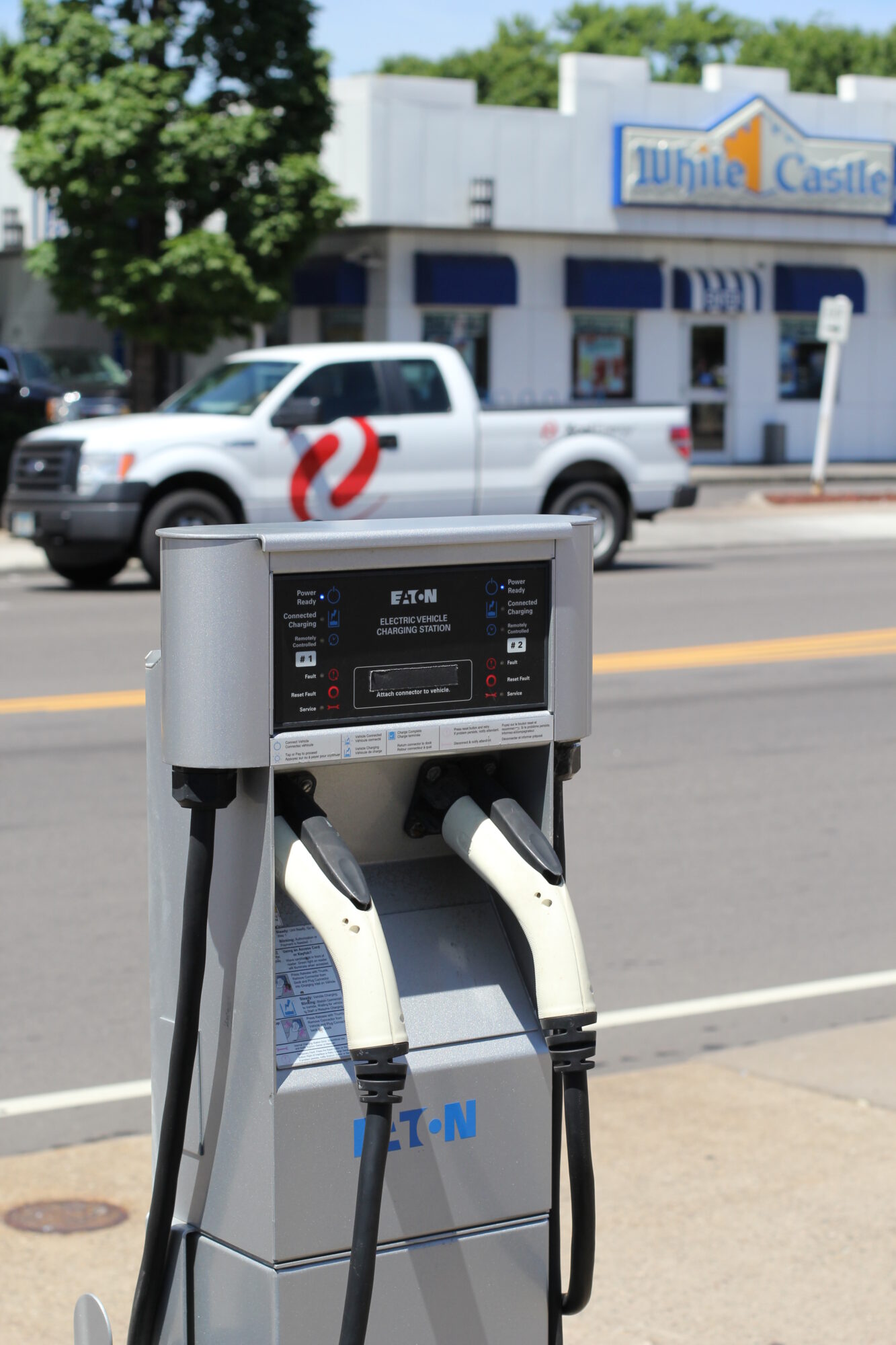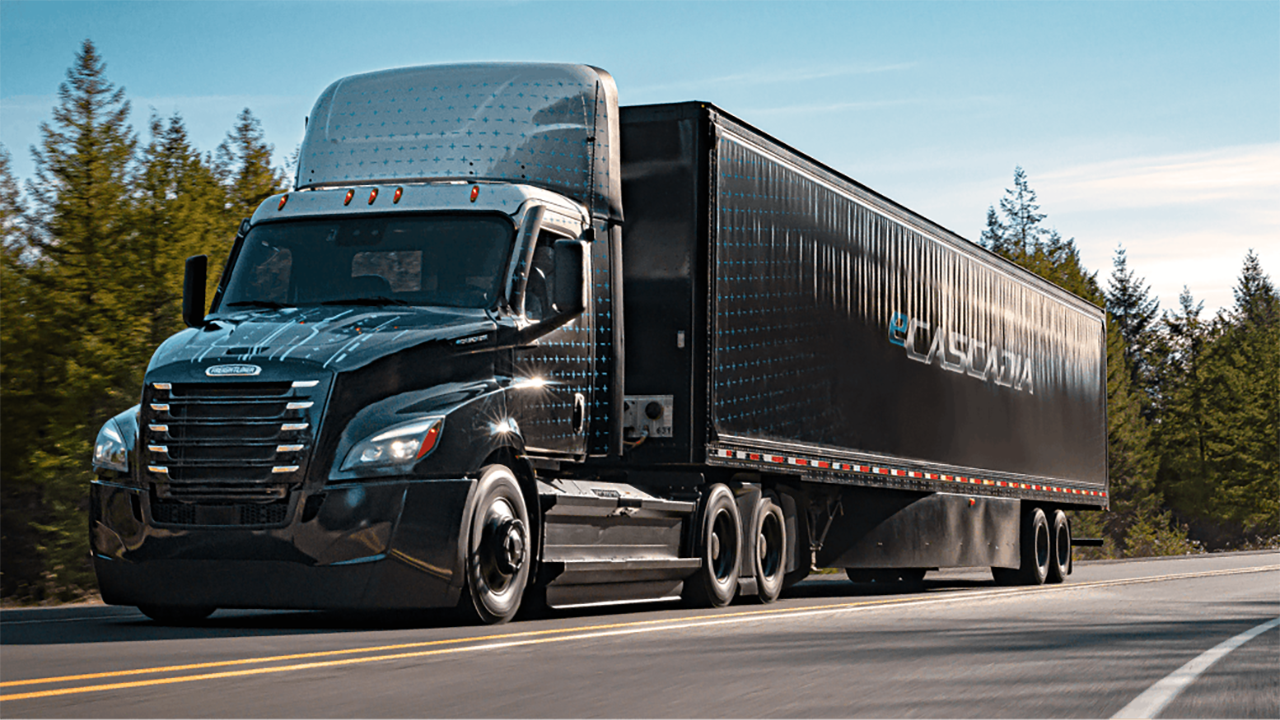
At the end of 2023 there were many claims that Americans were not buying electric vehicles (EVs), which of course turned out to be less reality-based and more a result of fossil fuel interests spreading fear, uncertainty, and doubt on the EV transition underway. In reality, 2023 was another record year for EV sales both in the U.S. and other parts of the world. High interest rates, confusing purchase incentives, and charging standard changes might cause some crosswinds that slow down the sales a bit looking ahead into this year, but make no mistake, this shift will continue. I started working with EVs 14 years ago and not for a second have I doubted this transition will continue, especially considering EV technology is four times more efficient than internal combustion engines (ICEs). So, let’s talk a bit about EV market trends in 2024!
Trend 1: Minnesota is leading the Midwest in EV adoption (just behind Illinois)
Minnesota EV advocates have done a lot of work over the years to educate the public and decision makers on the benefits of EVs through activities like ride and drives and general webinars. Additionally, the Clean Cars Minnesota rule that passed in 2021 has increased the EV availability in the state. Together, these forces have propelled the EV market share in Minnesota to a Midwest-leading level of 6.6% in 2023 through September, with EV sales in the month of September reaching 8.6% of all light-duty vehicle sales, per the EV Dashboard hosted by the Alliance for Automotive Innovation. Only Illinois is one percentage point higher than Minnesota in the region. We have seen extremely strong growth over the past few years, given the 2020 EV market share in Minnesota was only 1.7% of all light-duty vehicle sales.
Trend 2: The U.S. EV market is also seeing healthy growth
In 2020, the EV market share of U.S. light-duty vehicle sales was 2.5% and last year, after Q3 year to date, market share was 9.8%. This growth is remarkable and follows the trajectories in other parts of the world. The fastest EV adoption rates have been seen in our fellow cold-weather areas in Nordic countries where EV market shares have shifted in last four years from around 10% to over 50% levels, with Norway leading with over 90% EV market share numbers. This provides us with a good perspective on how fast EV market growth can be, but this growth doesn’t happen by itself. We need to continue to educate people and share experiences to overcome the natural and manufactured inertia that we face in the market.
Every EV sold means one fewer fossil fuel burning vehicle on our roads. These vehicles are not increasing overall car sales, but replacing internal combustion engine (ICE) vehicles with electric drive trains that are increasingly powered by renewable energy. This is why everyone buying a car should follow the “No Plug, No Deal” mantra.
Trend 3: Federal EV tax credits give a boost to…
Federal tax credits are still a solid EV adoption tool, but the latest changes have set strict requirements on U.S.-based manufacturing and battery materials sourcing for new EVs, so fewer vehicles are eligible in 2024 than in 2023. This has limited the federal tax credits’ immediate applicability in decreasing up-front costs to enable increased EV adoption, but it has had a big impact on increasing EV, battery, and material manufacturing in the U.S. In the long run we will see big benefits from this, but in short term, it may have a slowdown effect on the market—though there was also a trend of across-the-board EV price cuts at the end of last year, in part spurred by the price caps for federal EV tax eligibility. We are starting this year with only 19 EV models qualifying for federal tax credits, but we can expect this list to start growing slowly. And if your dream car is not on the list, you can still access at least a portion of the tax credits by leasing the vehicle because of a loophole in the legislation. Check out manufacturers’ websites to see how good leasing deals are these days.
Another point of good news is that there is now a Federal Used EV Tax Credit for up to $4,000. This credit doesn’t have the same kind of limits on vehicles, but it does have income limits for EV buyers. The credit equals 30% percent of the sale price up to a maximum credit of $4,000. The vehicle must be purchased from a dealer and have a sale price of $25,000 or less. You can learn more about the federal Used EV Tax Credit here.
Trend 4: State incentives offered by Minnesota’s EV rebate programs

Minnesota’s EV rebates offer up to $2,500 for new EVs and up to $600 for used ones. They are based on a 2023 state law that was designed to be easy for consumers by enabling people to get the rebate at the point of purchase. A new EV with a cost of $55,000 base MSRP or less could qualify for up to a $2,500 state rebate. This same structure also made it more time-intensive to implement so it is not yet available. We can expect the Minnesota Department of Commerce to launch it very soon though, so check out the link below to get the latest information. The good news is that this will not have the same vehicle restrictions as federal rules do, so it will work as an across-the-board EV adoption tool. These funds will be limited and will be allocated on a first come, first served basis. You can learn more here.
Trend 5: Public charging stations in Minnesota will nearly double
2024 will be the year of direct current fast charging (DCFC) infrastructure in Minnesota. Public charging growth has unfortunately been slow in Minnesota, but this is about to change. We will see a sizable increase in fast charging locations across Minnesota which will make it easier to travel with an EV in the state.

The Minnesota Pollution Control Agency’s (MPCA) Volkswagen Settlement Grant installations will bring more than 40 DCFC stations to Minnesota. In addition to this, the northern Minnesota electric utility, Minnesota Power, will install DCFC infrastructure around their service territory, while the Minnesota Department of Transportation will oversee federal National Electric Vehicle Infrastructure (NEVI) funding to bring 18 DCFC sites on the Highway 35 and Highway 94 corridors. In addition to our Minnesota-based ZEF Energy network, Circle K and Holiday stations have already opened several DCFC stations at their sites and nationwide charging network providers Tesla, Electrify America, EVgo, Rivian, and others are expanding their charging networks to Minnesota. Even local auto dealers are installing DCFC stations on their lots, many of which are available for public use. Right now, we have 137 DCFC station locations in Minnesota with 444 plugs. At the end of the year, the number of locations could be over 250 with over 800 plugs. That is not quite double, but close to it!
Trend 6: The great migration to NACS begins…
This is also the year that we will begin to see a migration to the North American Charging Standard (i.e. NACS / SAE J3400) for electric vehicle charging plugs. In the past we had three charging plug standards for DCFC: CHAdeMO, CCS, and Tesla. However, Tesla has been leading the way in DCFC and their Supercharging network is by far the biggest, most reliable, and easiest to use. Other manufacturers have been envious of Tesla’s network and began to move away from the Japanese-set CHAdeMO standard (common in earlier Nissan Leafs) in recent years so that will be gone soon. In 2023, almost all auto manufacturers also made a decision to move from CCS to Tesla’s NACS, so now the industry is finally moving towards a single charging standard. Hooray!
SAE International, a group that develops global engineering standards, has developed a common J3400 standard to support this process, and the federal government allowed its NEVI-funded DCFC to have NACS/J3400 adaptors installed. This year, auto manufacturers will bring CCS to NACS adapters to the market, enabling non-Tesla EVs to start using Tesla’s Supercharging network. Beginning next year, they will also change the plug in their new vehicles to J3400 standard so then those can use the Supercharging network natively. This all means that in the next five years we will still be living with a couple of standards, but everyone should be able to use different networks by using adapters. Sure, it is a bit of a pain, but sometimes we need to make some changes to get better results. If you are familiar with the metric system, you can imagine how much easier everything would be nowadays if we would have moved to metric system in 1970s as was planned—but I’m biased!

Trend 7: The Clean Cars Minnesota rule will drive availability
In 2021 the MPCA adopted the Clean Cars rule. The rule goes into full effect starting with model year 2025, which most auto manufacturers start selling in August this year, 2024. This rule requires auto manufacturers to make sure that a certain percentage of their total vehicle sales in Minnesota are zero-emission vehicles. Requirements are not very high and many manufacturers are already selling more EVs in Minnesota than what’s required by the rule, but this brings all manufacturers to the EV market and sets a floor for EV sales. This will improve the EV availability and especially diversify the options for Minnesota buyers.
In fact, we are already seeing more EVs at Minnesota dealers because manufacturers have been able to accrue early-action credits under Clean Cars Minnesota, which means manufacturers could count some EV sales in the years between adoption and full enforcement towards meeting the requirements of this rule. This is, in large part, why Minnesota is now leading the Midwest states in EV adoption. For years we have been “flyover country” for many manufacturers, but this ruling means that they need to provide EVs to Minnesota and this gives our local dealers a real opportunity to start selling EVs.
Part of the frustration local auto dealers have had with transition to EVs is that vehicle availability has thus far been unsure. They can’t start to build any kind of EV business plan if they have no guarantees that they will get any EV models next month. I have recently spoken with many dealers who are looking forward to more steady supply that is being brought to Minnesota by the Clean Cars rule.
Trend 8: The Internal Combustion Engine has peaked

The U.S. Environmental Protection Agency released their latest Automotive Trends Report in December 2023 which highlights that the fleet average miles per gallon (MPG) increased 0.6 year-over-year, to 26 MPG in 2022. While most of the pages contain information on how different ICE technologies have been applied over the years, if you look at the graphs on page 62 you realize that ICE has clearly flatlined in miles per gallon improvement and the only progress in these numbers is coming from EVs. Most of this report turns out to be information about outdated technologies that don’t provide any real improvements anymore. The real solution is electrification. Not that this was a surprise to anyone paying attention to how different technologies have been developing!
Trend 9: EVs are expanding into medium- and heavy-duty trucking
Medium- and heavy-duty trucking is also starting to electrify, which is an exciting development. Medium- and heavy-duty trucks only make up 3.7% of U.S. Highway vehicles, but they produce nearly 30% of on-road vehicle emissions. Although we have not seen rapid movement in this space yet, make no mistake, the majority of trucks will be battery electric in coming decades. Why? The first reason is the simple one, no other powertrain can provide the same energy and cost efficiency as EVs do. And the second reason is that battery technology is starting to become good enough even for longer haul trucks. Let’s look at the numbers. Based on the U.S. Department of Energy’s data, 44% of the domestic tonnage shipped by truck travelled below 100 miles and shipments between 100 and 249 miles accounted for 43%. This means that 87% of U.S. truck freight tonnage was shipped less than 250 miles and that is well within the capabilities of electric trucks and delivery vehicles. There really is no reason why we shouldn’t see a very strong growth in this sector covering 87% of the freight. We can leave the last 13% for diesel and hydrogen trucks to fight over for now.

Trend 10: Consumers are opting not to wait
Are you still wondering if you should wait on buying or leasing an EV to see if breakthrough battery technology is right around the corner? The answer to this question is simply no, because there will not be such a breakthrough. Battery technology keeps improving gradually, the same way as it has done for the last 15 years. During this time there have been a myriad of promises of a new battery tech that will make other technologies obsolete and none of those have turned out to be true.
Of course, we will continue to see a variety of different developments in the battery technology—traditional Lithium-ion technology keeps getting better and more energy dense. Lithium iron phosphate batteries will increase their market share because they need fewer critical metals (e.g. no cobalt) and are more affordable for big batteries. Sodium ion batteries will provide more affordable, but less energy dense, options for shorter range EVs as well as solid state battery technology which will come to the market in next couple of years, though production will be very limited, and it will not reach the wildest dreams and promises that some manufacturers have offered.
In general, there really isn’t any reason to wait for something better, especially considering the right time to shift to driving electric was five years ago! Any time you delay now is throwing more good money to support bad fossil fuel interests. If you are still on the fence, you can easily hedge your bets by leasing an EV, buying a used one, or getting a plug-in hybrid electric vehicle (PHEV). All will get you driving electric.
Happy electric 2024!
Thanks for checking out my annual market trends update for 2024! It is fun to look back at the trends from just a few years ago and see how far we have come. Are you still trying to decide which EV to choose?
We have seen compelling new EVs coming to the market this year. The median new EV range has increased from 76 miles in 2012 to 270 miles in 2023 and over 90% of models are available as All Wheel Drive. Altogether the list of available EVs in the U.S. is already six pages long. One more new model and we have to add another page! Go find your favorites and have fun test driving them before making a decision: www.EVInfoList.com
There are also incredibly good deals on used EVs on the market. If you’re not ready to go all in on a new EV, consider used! The used EV market has been slower to take off which provides savvy car buyers some really awesome deals. So don’t worry if new cars are not your thing, the used EV market is even more exciting right now. Cars.com lists most dealers’ stock, Tesla stores have used Teslas, and Facebook Marketplace seems to be a decent channel for finding private sellers’ EVs on the market. And of course, there’s always one of my favorite used EV dealers, GS Motors.
